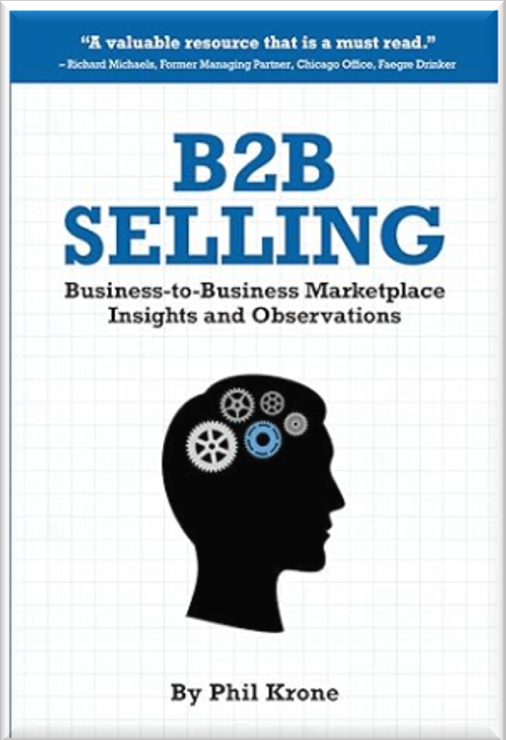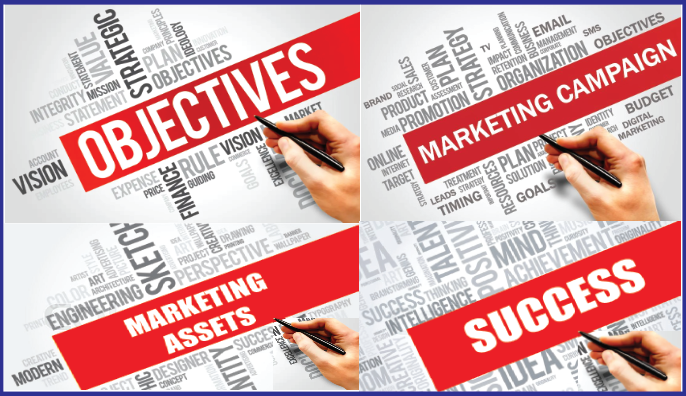By Phil Krone, President
•
June 18, 2024
Several years ago, I helped a Wisconsin piece-part manufacturer compete for a multimillion dollar opportunity. They asked me who I wanted to take along from their company, and I said the chief engineer, the head of quality control, and a production representative. Day 1: On the plane ride to the East Coast, I let everyone know we were looking for information that would give us a competitive advantage. Without it our odds of winning would be one in three or one in four, depending on how many competitors we were facing. The prospect organized a get-to-know-you cocktail event that evening. There we learned that the project involved a complete redesign of a common household appliance. The prospect’s people were excited because they had already received a large Christmas order from a major retailer. Our team debriefed later. Despite getting to know each of our counterparts from the prospect, we had not learned anything that would give us a competitive advantage. Day 2: We met with departmental leaders, including purchasing. Before the meeting our head of quality assurance had breakfast with his counterpart. He had learned that a design issue had not yet been resolved and was causing intermittent failures in the prototypes. Our prospect’s quality assurance head explained that just before going to one of the vice presidents for budget approval, he and his colleagues were playing with a prototype that failed to function intermittently. They went to the meeting and did get the approval. But just as they were heading out the door the VP asked, “Do we have a working prototype?” The engineers said yes, pulled it out of a briefcase, and handed it to him, holding their breath. He tested it, and it worked fine. “Let’s go,” he said. When I heard that, I knew we had learned something that could help us win the business: our competitive advantage. We started the meeting with the buyer’s procurement team by asking what the project we were bidding on would mean to each of them. We heard a range of responses: • “This project has the potential to help me be promoted from a line manager to production manager.” • “There should be so few quality issues I might be able to go on vacation this year.” • “The bonuses will help me pay for my kids’ college expenses.” Clearly, the success of this program was important to everyone on their team. More Stories about Winning the Business Read similar stories in my new book, B2B Selling: Business-to-Business Marketplace Insights and Observations, which is available on Amazon . We asked about what might derail the project. Despite soft questions from us, nobody brought up the problem of intermittent failures that we knew about. Finally, I did bring it up without revealing how we knew about it. The discussion then turned more serious. Not only did the appliance not work, but to make the delivery promised to a major retailer for Christmas, the tooling construction had to be started immediately. But before that the design issue had to be fixed. We said we would like to spend the afternoon addressing the design problem and come back the next morning with a solution, if we could come up with one. Day 3: We were sitting in the buyer’s office waiting for the morning meeting to begin when our competitor called the buyer to see “how he looked” on the program. (We could hear the buyer say, “I don’t know how you stack up. I haven’t made the spreadsheet yet.”) This was a really interesting response for two reasons. First, adding up the piece price and the tooling amortization figure for three or four potential vendors in a spreadsheet would take five minutes, so the spreadsheet probably existed already. Second, and more important, was that even though the person calling was a current supplier the buyer did not tell him about the design issue. The company did not want a lot of people to know about the problem until they had fixed it. We knew about it because we were there. We had shown up. At the meeting with the procurement team, we reviewed what we had learned about their objectives for the project and the need to address the design issue. Before sharing our solution, I asked what would happen if they delayed the project to reengineer the product and missed their Christmas commitment to the retailer. The answer was that they would have a hard time getting an order for the following Christmas. I then asked what would happen if they went ahead and produced the product knowing there would be intermittent quality issues. The answer was that not only would this product have a hard time getting shelf space in the future, but the retailer might also reduce shelf space for other legacy products our prospect supplied. Of course, I wasn’t suggesting they do either of these things. I just wanted them to state the cost of the status quo out loud to emphasize the consequences of not resolving the issue. That in turn would emphasize the value of our solution. We then presented our solution to address the “have to start . . . can’t start” issue. We proposed starting the tooling immediately but staying away from the gear centers, which we believed were the source of the design issue. We also proposed building prototypes with different gear centers to resolve whatever issues there were. The prototype experiment would produce an optimal design in time to keep the tooling on schedule. Everyone was happy, and they asked us to drop by the next morning to pick up the order. Day 4: When we walked into the meeting, we could see something was wrong. We learned that they couldn’t award the contract to us because the approved project plan required them to use a current vendor to reduce risk. Why had we been asked to bid at all then? The plan also called for them to get three bids and one of their current suppliers had declined to bid. Key Point: When this kind of roadblock comes up, it’s important to stay calm and to focus on how to get the ball back in your hands. Before asking them if they could change the plan, I went over everything we had covered since day one: The importance of the success of the project for each person on the team, including what it meant to each of them personally; the importance of meeting the retailer’s demand for delivery in time for Christmas; that we were the only ones that knew of the design issue, and, most important, that we were the only ones with a potential solution. Then I asked if they could modify the plan. They had of course thought of that, but the VP who had approved the plan was out of the country. When this happens it is important to just ask the question that can bring the businesses back to you, in this case: Can we call him to see if he would approve the change? They made the call on a speaker phone so everyone could hear. His response wasn’t surprising. He was first of all unhappy that he hadn’t learned about the design issue sooner and that the vice president wasn’t told before approving the capital budget. Then he summed up the situation: “So what you’re telling me is that, first, we have a design problem none of our current vendors even know about let alone have a solution for. And, second, that you have a potential vendor on the spot who does have a solution and who can make the Christmas delivery date. Is that right?” After a pause, he said, “Change the plan!” We flew home that afternoon with the order. Here are the major takeaways: 1) The best way to gain an information advantage is to show up and do discovery in person. 2) If you can build bridges in addition to sales-to-purchasing, such as quality-to-quality, production-to-production, and engineering-to-engineering, you have increased the odds of learning what you need to know to gain a competitive advantage. 3) When told the business is not coming your way, but you know an order hasn’t been placed yet, keep asking what it would take to bring the project back to you. 4) Make sure your presentation is “prospect-centric”—that it is about the customer and his issues—not “seller-centric” and only about your capabilities. 5) If the program is large enough, or important enough, hiring outside resources to get the win can be a sound investment. 6) When following up on a submitted proposal, don’t ask “how do we look?” That reduces the discussion to price. Please get in touch with us directly at 847-446-0008 Ext. 1 or pkrone@productivestrategies.com .












